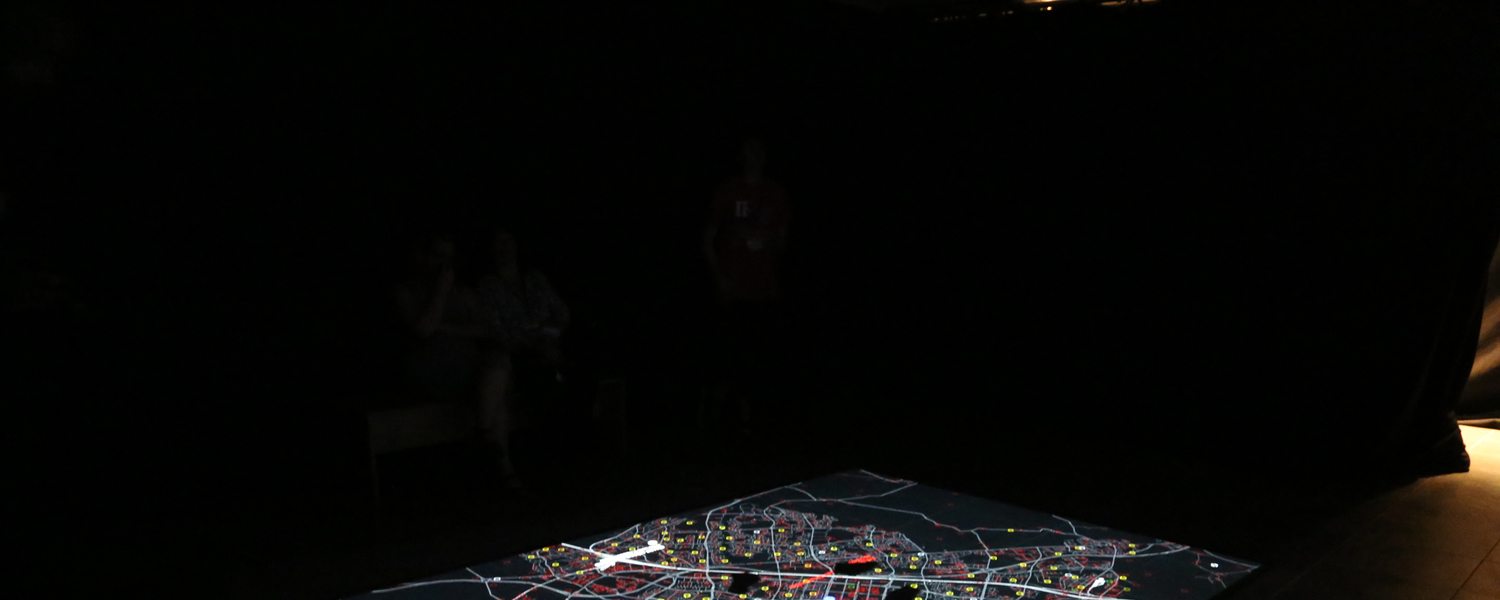2016
A collaboration with Wesley Goatley, Ground Resistance was a commission by the Open University for the Milton Keynes International Festival 2016.
Ground Resistance was a multisite installation which examined the presence, absence and temporality through the developing ‘smart city’ of Milton Keynes.
A unit in the centre.mk shopping mall was converted to house a large floor-projected map of Milton Keynes, displaying a constantly updating view of geo-located data related to the ‘hard’ infrastructures of the city, such as energy utilities, public services, and transport. The data is being drawn from the Open University’s MK:Smart data hub, a citywide project of data collection, drawn from multiple industry and governmental sources.
As with many such ‘smart city’ systems, many of these datasets update at wildly varying rates, making any one view of the city through the data a momentary one, rather than omniscient. In Ground Resistance, this friction of time in the ‘always on’ smart city is the lens through which the data is seen. Each data set constantly fades in and out of view, with its rate of disappearance matching the rate at which it updates; a data set which updates every one minute will appear and then slowly fade away over one minute.
A speaker installation above the map correlates ringing bells to the locations on the map below. These sounds are also synchronised to the update rate of each dataset, their volume fading as the data ages, and rising again when a new update occurs. With each data set functioning at a different set of ‘real time’, this creates a generative sonic environment in the space which is defined by the often-overlooked temporal element of a data-oriented view of a city.
Objects suspended above head height between the projector and the floor cast shadows which match the areas of Milton Keynes that the system has no data for, drawing audience attention to this absence. The shadows appear like voids, disrupting the usual seamlessness often seen in data visualisations. Through this installation, we highlight the non-unitary and often fragmentary view of cities when seen by the data they generate, which exists in conflict with the ‘data solutionism’ of popular dialog surrounding smart cities.
At a satellite installation in the nearby National Museum of Computing at Bletchley Park, an intimate watching station uses low cost and mass-produced hardware alongside open-source software to examine how the people of the city can detect and monitor data embedded in radio signals to watch the logistical infrastructure which underpins smart city technologies. The installation is presented in the gallery dedicated to the demonstration and examination of the Colossus supercomputer, which is kept operating every day.

Finally, an online component to the work views the open data around Milton Keynes as an overlaid map, allowing viewers to plan a public transport route across the city which negotiates the density of the data in the town as if it were a topological feature of it.
As part of this exhibition, Wesley and I hosted an evening of talks - Indeterminate Futures - exploring notions and politics of the ‘smart’ city. We were joined by Professor Gillian Rose (Open University), Ramon Amaro (Goldsmiths, University of London), and Naomi Turner (Projects by If).
